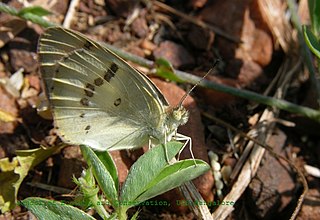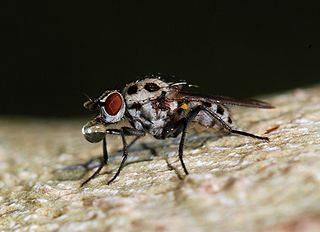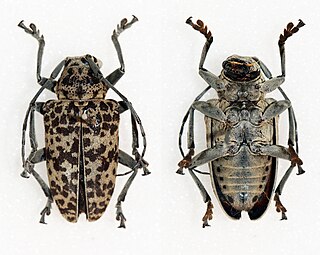
Sir Aaron Klug was a Lithuanian-born British biophysicist and chemist. He was a winner of the 1982 Nobel Prize in Chemistry for his development of crystallographic electron microscopy and his structural elucidation of biologically important nucleic acid-protein complexes.

Johann Christoph Friedrich Klug, was a German entomologist. He described the butterflies and some other insects of Upper Egypt and Arabia in Christian Gottfried Ehrenberg and Wilhelm Friedrich Hemprich's Symbolæ Physicæ. He was professor of medicine and entomology in the University of Berlin where he curated the insect collections from 1810 to 1856. At the same time he directed the Botanic Garden in Berlin which contains his collections. Klug worked mainly on Hymenoptera and Coleoptera. The plant genus Klugia was named in his honour as well as the butterflies Geitoneura klugii and Heliophisma klugii.

Colotis, called orange tips or Arabs, is a genus of butterflies of the subfamily Pierinae found mainly in Africa and south-western Asia. The larvae of all Colotis species specialize on plants in the family Capparaceae.

Dineutus is a genus of beetles in the family Gyrinidae, the whirligig beetles. They are 9 to 15 millimeters long. Their elytra are smooth, shallowly lined, or grooved.

Anthomyia is a genus of flies in the family Anthomyiidae. They look rather like small houseflies, but commonly have conspicuous black-and-white patterning. This appears to be a mild form of aposematic coloration, though they do not appear to be distasteful unless they have eaten something offensive to the predator and have loaded their guts with it.

Polybothris is a genus of beetles in the family Buprestidae, containing the following species:
Eurydera is a genus of beetles in the family Carabidae, containing the following species:
Euleptus is a genus of beetles in the family Carabidae, containing the following species:
Odontocera is a genus of beetles in the family Cerambycidae, containing the following species:

Hoplopyga is a genus of beetles of the family Scarabaeidae. These beetles can be found in Central and South America.

Coptops is a genus of longhorn beetles of the subfamily Lamiinae, containing the following species:

Frea sparsa is a species of beetle in the family Cerambycidae. It was described by Johann Christoph Friedrich Klug in 1833. It is known from Madagascar. It contains the variety Frea sparsa var. vagepicta.
Coptops illicita is a species of beetle in the family Cerambycidae. It was described by Francis Polkinghorne Pascoe in 1865. It is known from Indonesia and the Philippines.
Batrachorhina vulpina is a species of beetle in the family Cerambycidae. It was described by Johann Christoph Friedrich Klug in 1833, originally under the genus Saperda. It is known from Réunion and Mauritius.









